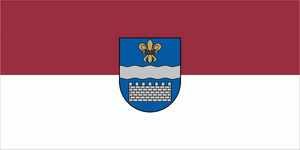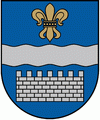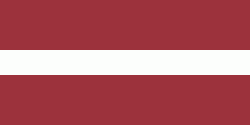Daugavpils
 |
 |
Daugavpils is located relatively close to Belarus and Lithuania (distances of 33 km and 25 km respectively), and some 120 km from the Latvian border with Russia. Daugavpils is a major railway junction and industrial centre and was an historically important garrison city lying approximately midway between Riga and Minsk, and between Warsaw and Saint Petersburg.
Daugavpils, then Dyneburg, was the capital of Polish Livonia while in Polish–Lithuanian Commonwealth. Following the first partition of Poland in 1772, the city became part of the Russian Empire. Since the Second World War, it has maintained an overwhelmingly Russian-speaking population, with Latvians and Poles being significant minorities. Historically, German and Yiddish were additional prominent native languages.
In the Latvian language, the current name Daugavpils references Daugava (the Latvian name of the Western Dvina River) and the Latvian word pils (meaning "castle" - cognate with Lithuanian pilis and with Greek polis ).
Historically, several names in various languages have identified Daugavpils. Some are still in use today.
* Даўґаўпілс (Daŭgaŭpils), Дзвінск (Dzvinsk), historically Дынабурґ (Dynaburg)
* Düünaburg, Väinalinn
* Väinänlinna
* Dünaburg (Düna - the Western Dvina River + an early form of German Burg - "fortress" or "castle")
* Daugpiļs
Map - Daugavpils
Map
Country - Latvia
 |
 |
| Flag of Latvia | |
After centuries of Teutonic, Swedish, Polish-Lithuanian and Russian rule, which was mainly executed by the local Baltic German aristocracy, the independent Republic of Latvia was established on 18 November 1918 when it broke away from the German Empire and declared independence in the aftermath of World War I. However, by the 1930s the country became increasingly autocratic after the coup in 1934 establishing an authoritarian regime under Kārlis Ulmanis. The country's de facto independence was interrupted at the outset of World War II, beginning with Latvia's forcible incorporation into the Soviet Union, followed by the invasion and occupation by Nazi Germany in 1941, and the re-occupation by the Soviets in 1944 to form the Latvian SSR for the next 45 years. As a result of extensive immigration during the Soviet occupation, ethnic Russians became the most prominent minority in the country, now constituting nearly a quarter of the population. The peaceful Singing Revolution started in 1987, and ended with the restoration of de facto independence on 21 August 1991. Since then, Latvia has been a democratic unitary parliamentary republic.
Currency / Language
| ISO | Currency | Symbol | Significant figures |
|---|---|---|---|
| EUR | Euro | € | 2 |
| ISO | Language |
|---|---|
| LV | Latvian language |
| LT | Lithuanian language |
| RU | Russian language |
















